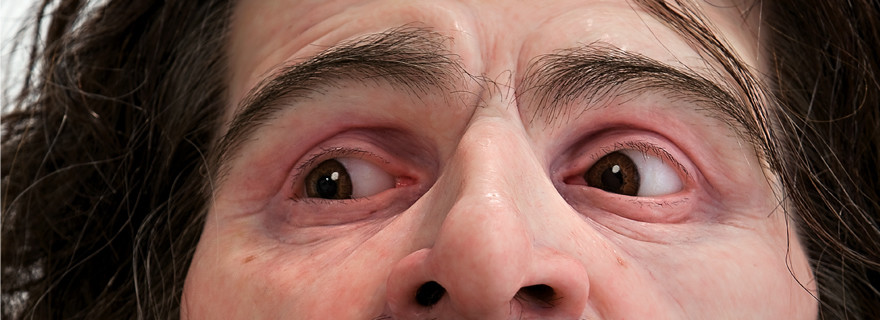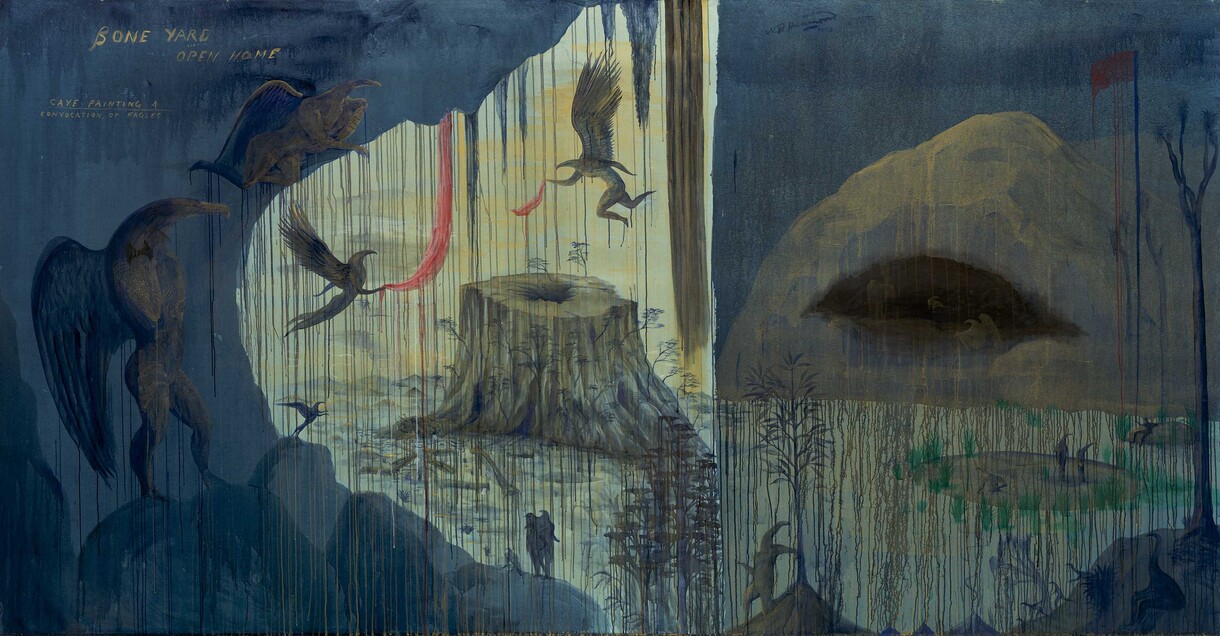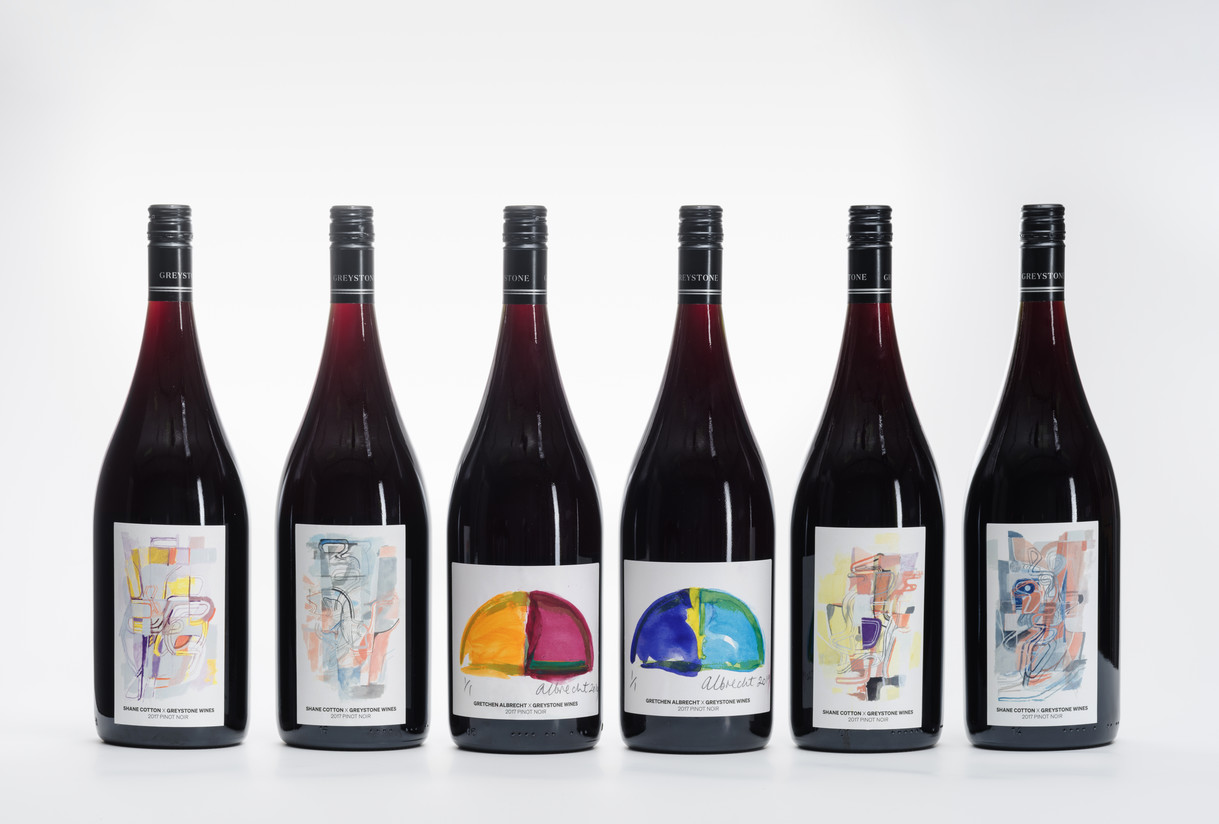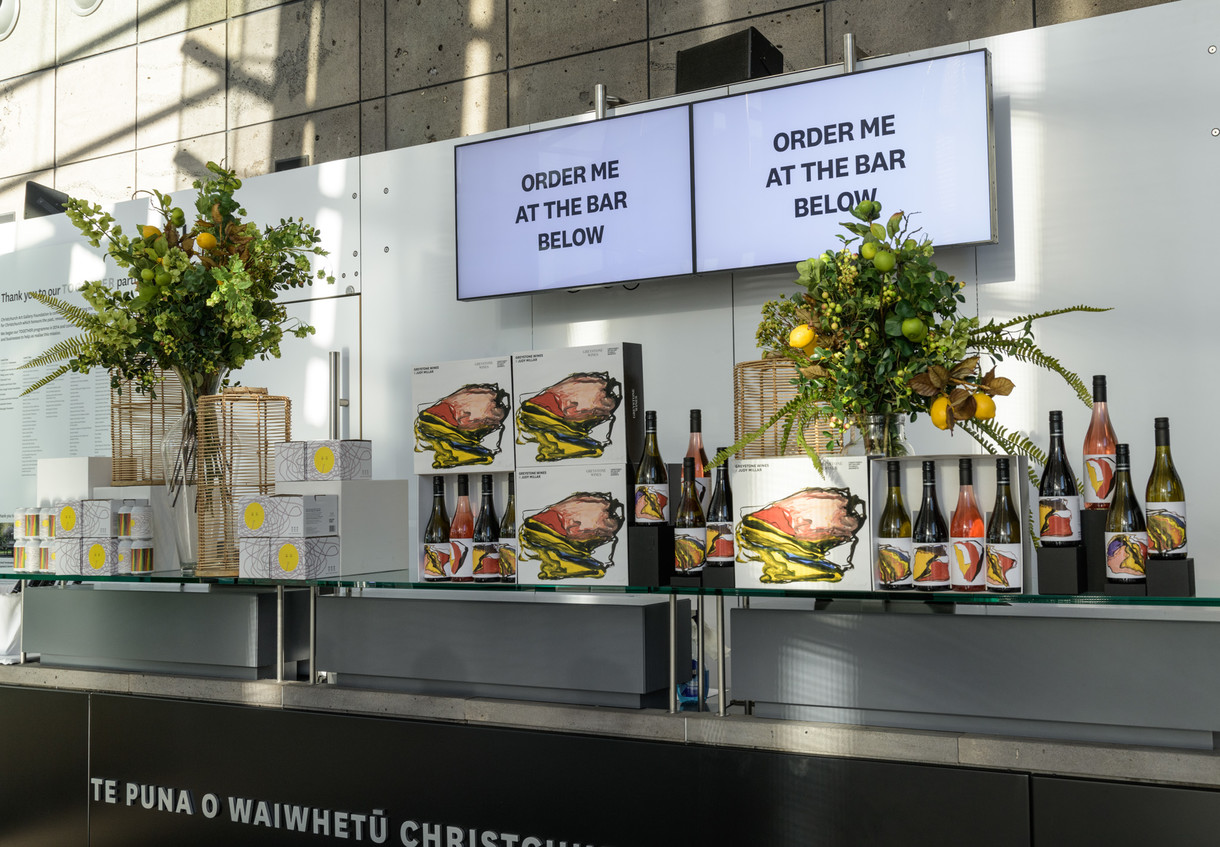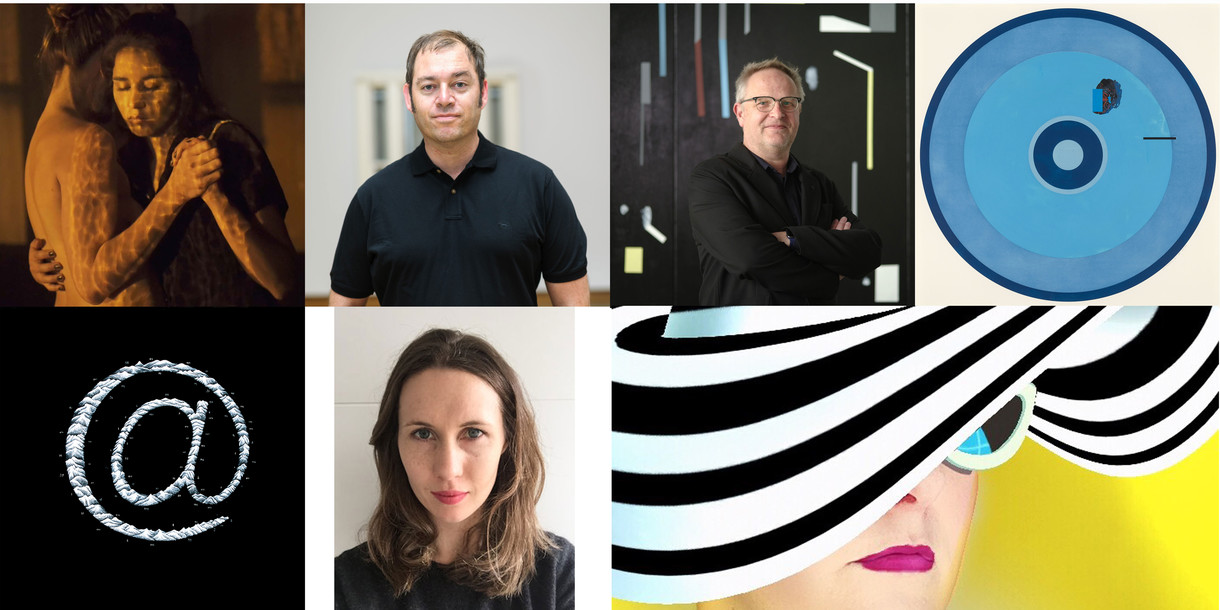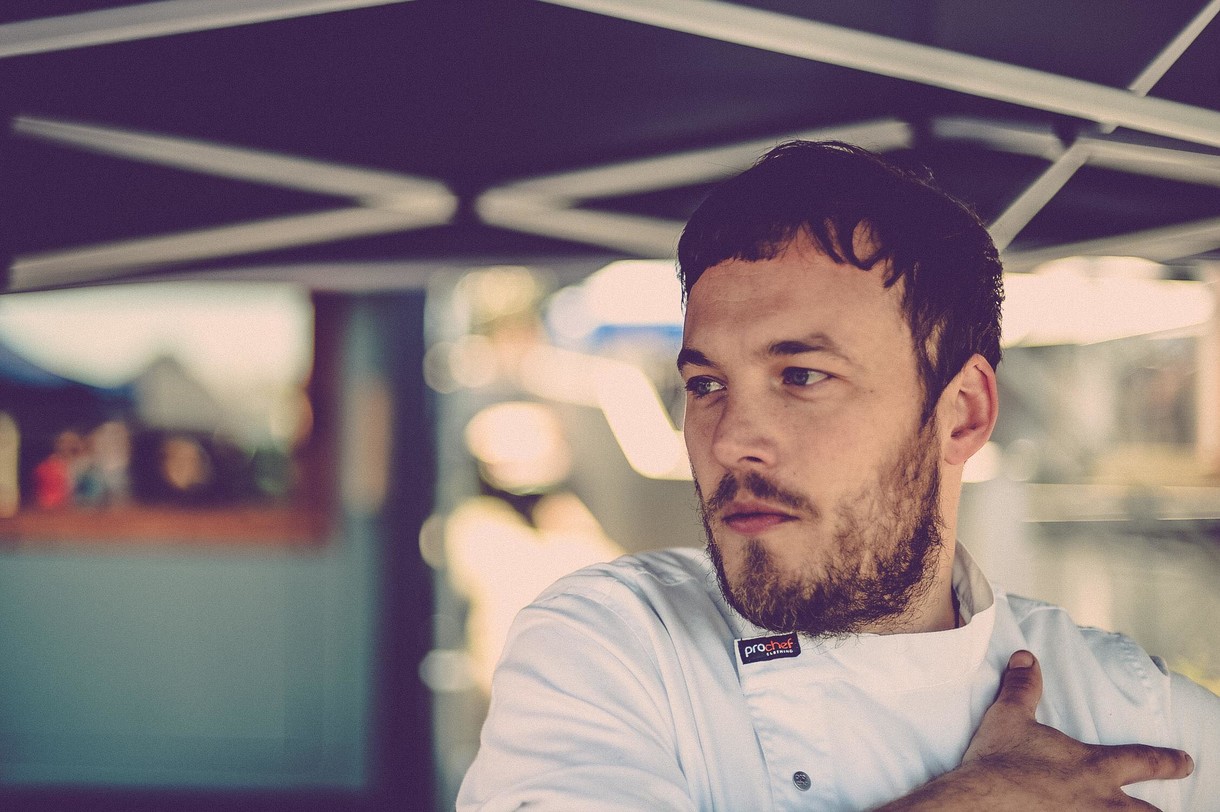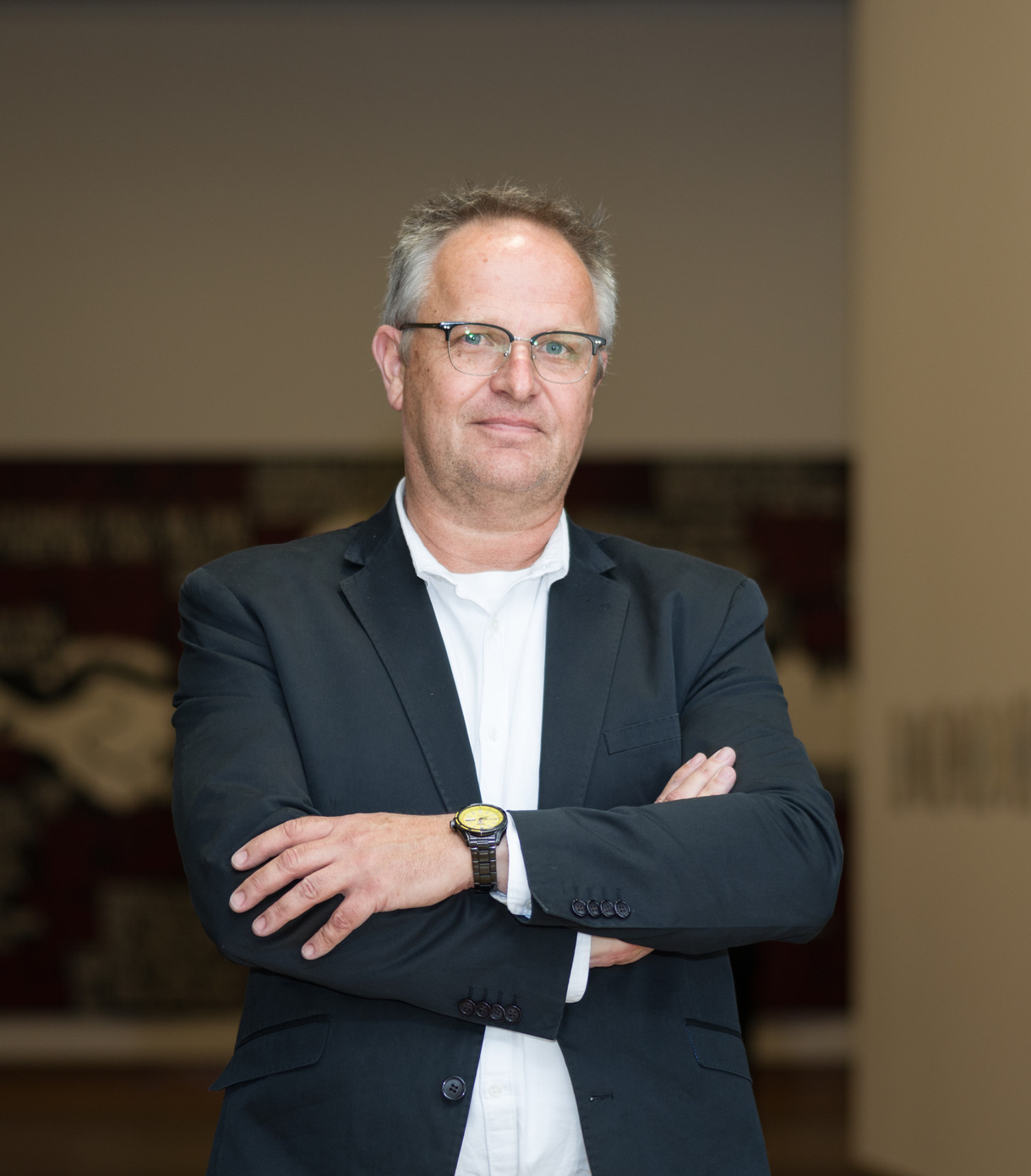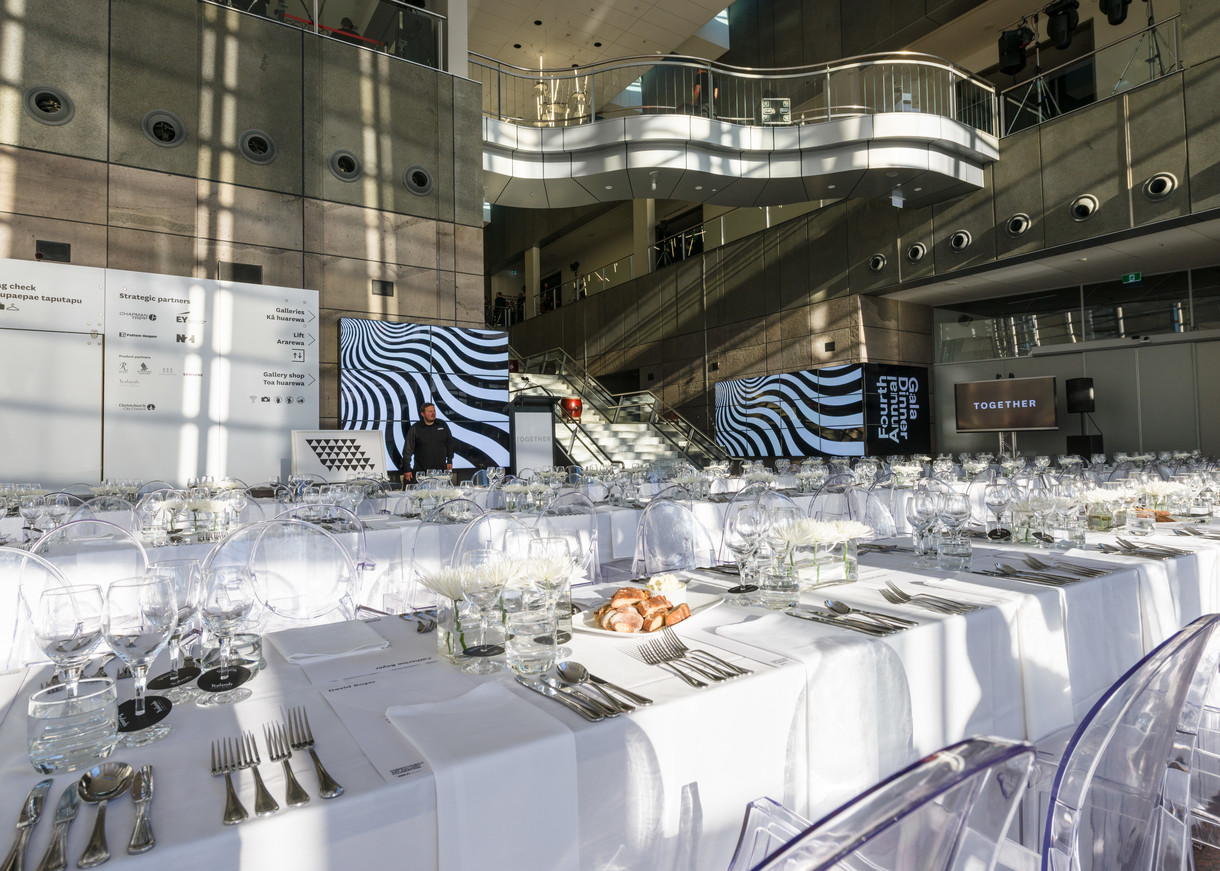The London Club

Jenny Harper and Sir Nicholas Serota with Ron Mueck’s Still Life in April 2016.
In September 2017, Gallery director Jenny Harper, curator Felicity Milburn and Jo Blair, of the Gallery Foundation’s contracted development services, Brown Bread, went to London, taking a group of supporters who received a very special tour of the city’s art highlights. While there, they further developed the Foundation’s new London Club. Recently they sat down together in Jenny’s office…
Felicity Milburn: Jenny, why is London such an important connection for Christchurch?
Jenny Harper: There are historic connections – our collection was very English from the beginning, and many artists looked that way in the nineteenth and earlier twentieth centuries; I also think back to the time when Jonathan Mane-Wheoki selected works for it from British dealers in the early 1970s. But more than that, it’s a very important part of the art world. It’s also somewhere we know a range of interesting people, and where many New Zealanders, including former Christchurch residents, live.
Jo Blair: We first went to London because of the fourth work in the Foundation’s five great work series, Bridget Riley’s Cosmos. We decided to take special donors who contributed to the fundraising there to meet Bridget. But it’s an intriguing coincidence that four of our five great works seem to have English connections.
JH: That’s right. Our interest in a London community has emerged off the back of the five great works. And it’s been made possible by an amazing relationship with Singapore Airlines who help us get there. The series emerged out of a rather unfortunate cut in our acquisitions budget. That gave us the idea of developing an endowment to act as a buffer against the unpredictability of council funding and a changing city climate after the earthquakes. I felt so strongly about collections development and collections funding that I thought it was important to mark this pivotal time (the five years the Gallery spent closed for repairs) by setting out to buy five great works for the city and building a $5m endowment.
JB: In 2016 we offered ten women donor spots to help buy the Bridget Riley work (we ended up with nine women, one family of women and one group of women). In return, they were offered the chance to go with Jenny to meet Bridget in her London studio last year. Some of the donors couldn’t get there because, you know, some of us can’t always drop everything and go to London without planning it for a couple of years... So they offered the tour to their children who were living there, which was really nice. We saw some of our group fall in love with Bridget’s art after a seven-hour day with her. It was beautiful. People think you have to be into art and know a lot to be involved, but it’s not about that. It’s actually about…
JH: …coming along and being open to it and learning together.
JB: There was quite a phenomenal London-based fundraising campaign for Christchurch straight after the earthquakes led by some amazing Kiwis who had been there for a long time, which raised $18 million.
JH: And it seemed their contribution to Christchurch had been acknowledged generally, but perhaps not personally.
JB: So we wondered if there was still a pulse there, a need to connect? Would they still care, and could we engage with them better now through art? So we gathered a few people at New Zealand House, just friends and family really as a starter, and it seemed that what we were doing in Christchurch with the Gallery really moved them. We didn’t ask for any money, we were just there to test the relationship out. What was amazing, however, was that we came home with donations from very generous souls when we hadn’t even made an ‘ask’. And that gave us confidence to go back.
FM: So what’s the long game for London?
JH: This year the Foundation committed to investing in London – we’ve been twice in a year and made a range of friends over there and we want to keep them.
JB: Well, we’re just really getting to know them. We’re on the ‘second date’ so to speak. We’ve managed to meet some quite exceptional people who are heartened by what we’re doing. It seems like people appreciated this bridge, this connection through art, that we are offering to the city.
JH: So, we launched the Mueck campaign in April this year. We had a party at Quo Vadis restaurant and another one at Hauser & Wirth gallery. Sir Nick Serota popped in, and Ron Mueck’s Still Life (the dead chicken) was on show, which was amazing. Anthony d’Offay, who is Ron Mueck’s agent (even though he doesn’t have a gallery anymore) helped us launch it. Mueck now lives on the Isle of Wight most of the time, but he’s from Melbourne originally. He was chosen to create our fifth great work as Christchurch had an already established connection with his work through the extraordinary response to his exhibition in the summer of 2010/11. Mueck was so impressed with the space that we gave the exhibition, and with the public response that he, I think, has a real soft spot for the city and what we’ve gone through. He and Charlie Clark, his technician, came over here at the end of November last year and we gave them time to walk around, talk to people and to see the Christchurch that they’d visited before but which was so altered. So he’s become, in a sense, one of us.
FM: It’s about the art and the audience, the connection between them.
JH: Yes. The everyday person. We had amazing numbers of people going to see an exhibition by an artist they’d never heard of; paying to see contemporary art. I think we were unsettled after the 4 September earthquakes and somehow the humanity of those works spoke to us in a remarkable way.
JB: So! We were on a mission to raise $1 million to buy a Ron Mueck and part of the proposition was to offer seven spots of major gifts of $100,000. We offered those donors the opportunity to meet Ron at his studio on the Isle of Wight in September this year.
JH: It was an amazing day.
JB: We also took Felicity with us…
FM: Very willingly…
JB: The advice we’d had from our earlier visit was that people really want to connect with Christchurch, but they also want to connect with what’s happening in the contemporary art scene throughout New Zealand. This time we put on a lecture about that at the ICA, delivered by Felicity.
JH: People really, really appreciated it. It was a great overview of the work of six artists, all with some connection to Christchurch; it wasn’t directly about responses to the earthquakes. It was just a nice introduction to some of the work here and by then people had met others and it was all pretty convivial. It’s important to keep up people’s interest, so we organised a number of other events that were pretty special. We had a private tour of the Bruce Nauman Artist Room at Tate Modern with Anthony d’Offay and a tour of the Serpentine.
JB: We would never have got those without Jenny’s relationships. Felicity also took our group to see six of her favourite works at the Tate and Jenny showed us her favourites at the Courtauld Galleries.
JH: So it’s access to experiences people wouldn’t ordinarily have, but there’s also a sense of relationship, of giving and return. It’s not just a one-way channel.
JB: It does feel quite mutual. Great friendships come out of these trips too, and when we go to London, people are grateful for the chance to talk about what’s happening here. Long may it last!
The Christchurch Art Gallery Foundation would like to thank the first givers to its London Club, who collectively made a $100,000 gift to the Our Own Ron campaign.
Leading the way…
Gregory Ambler
Tania and Anton Beardsly
Penny Brown
Harvey Brown
Anne Candler
Kirsten Edwards
Sandy and Michael Fisher
Gaye and Kent Gardener
Liz Grant
Anna Bond Gunning
Trevor and Louisa Hall
Tony Halligan
Nic Hamilton
Brent Hansen
Bronwen Horton
Douglas Jenkins
Sigrid Wilkinson and Stephen Kirk
Jessica Kirker
NZ Womens’ Network
Martin Prior
Eric Tracey
Stephen Waley-Cohen
Penny Walker
Sarah Wall
Michael Watt
With special thanks to Singapore Airlines, Margot and Fergus Henderson, Jeremy Lee and Caravan Restaurants.








